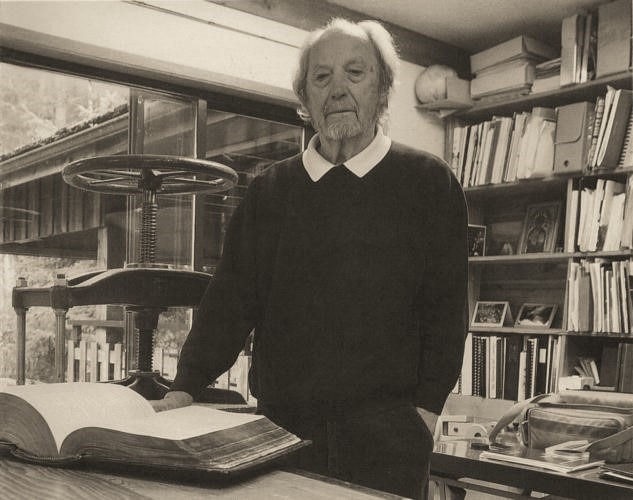It is not known how many family bibles Charles Brandt restored, but based on the number of photographs of bibles being restored in Charles’ laboratory, the number is significant. The Bowron Family Bible was a restoration completed for the Provincial Government of British Columbia’s Heritage Properties. The following is a description of the Bible and its restoration by Charles Brandt.
Barkerville Revisited
I am always delighted and sometimes pleasantly surprised by the variety of artifacts that enter my conservation lab located on the Oyster River near Black Creek: a Mclure or Rattonbury architectural drawing, a Shadbolt acrylic triptych, an incunabulum, a Walter Phillip’s watercolour, from time to time an
old family bible, and on the rare occasion a bible of the caliber of the Bowron Bible.
When I flyfished along the shores of the Bowron Lakes in 1980, It did not occur to me that I would have future contact with the Bowron family or Barkerville Historic Park. My colleague and I had parked the CCI Mobile Lab in the heart of Barkervllle. We had been greeted by the director and conservator who had pointed out items that needed attention: a charcoal drawing, bits of ancient wallpaper, the monitoring of
the environments of the buildings and displays etc. We saw summer employees in period costume strolling about the vi llage, and gold being panned from a small stream that worked Its way through its
centre. It was a very attractive and well displayed historic town.
I had heard of the Bowrons and knew that the lakes that I fished were named in their honour. But it wasn’t until I had won a contract with the provincial government in 1988 to restore the Bowron family bible that I looked more closely at their history.
The Bowron Bible is the property of the provincial government and has been on display in Barkerville for a number of years. The staff there and family members as well became concerned at the condition of the book. The leather had become dry and fragile along the hinge s and spine and small openings indicated either past or present insect infestation. They were concerned that the paper itself might be in need of stabilization.
When the bible eventually reached my studio for conservation treatment, it was with some anticipation and delight that I opening It for the first time. The births and deaths of the Bowron family had been entered by family members. First is that of John Bowron, and overlander who in 1862 traversed the continent searching In part for the metal that attracted thousands to seek their fortunes in areas where gold had been discovered. He served 44 years as postmaster, mining recorder and gold commissioner – to earn the appreciation of the government and as well to have lakes named in his honour. The bible ls an historic link with his family and the community he served so faithfully.
Following the usual procedure when an artifact enters my conservation lab, the bible was photographed (a condition / treatment report had already been sent out and approved by the Barkerville staff), tests performed to determine the paper’s acidity, the solubility of print and inks, and careful measurements taken. After consultation with the fumigation experts at CCI, the bible was placed in the deep freeze for two weeks to dispose of any insects that might possibly be present.
On its removal from this cold treatment, the cover was carefully removed and the book was completely taken down (all thread removed) so that the individual leaves were separated and ready for washing, deacidification and buffering in an alkaline solution of magnesium bicarbonate. After drying, the leaves were flattened and then mended using oriental paper and wheat starch paste . They were then resewn on linen tapes with bleached linen thread. The book was then rounded and backed, new acid-free boards attached and new leather added to the worn corners and spine before the original spine leather was reattached.
The Bowron Bible stands restored and conserved. Instructions accompanied its return, instructions for its long-term survival: the Relative Humidity should be maintained between 50-55%; temperature at 21 degrees (plus or minus 2 degrees) and cooler if possible; it should be stored or displayed out of direct sunlight and exposed to incandescent lighting not to exceed 50 lux. The leather binding should be treated with a mixture of anhydrous lanolin (40%) and neatsfoot oil (60%) at 5 year intervals. If these instructions are followed, the Bowron Bible should last far into the coming centuries.
